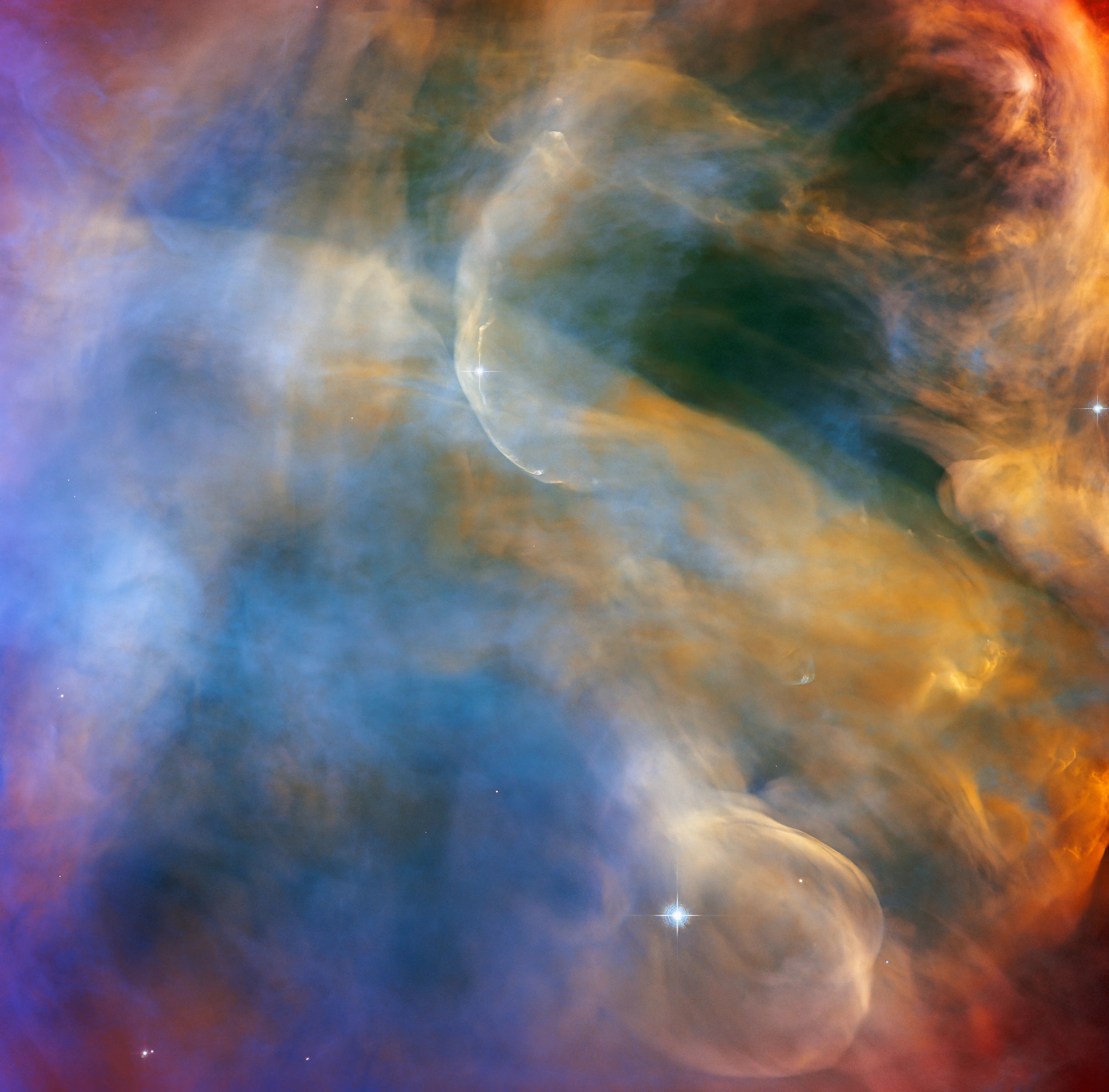2 min read

This celestial cloudscape from the NASA/ESA Hubble Space Telescope captures the colorful region in the Orion Nebula surrounding the Herbig-Haro object HH 505. Herbig-Haro objects are luminous regions surrounding newborn stars that form when stellar winds or jets of gas spew from these infant stars creating shockwaves that collide with nearby gas and dust at high speeds. In the case of HH 505, these outflows originate from the star IX Ori, which lies on the outskirts of the Orion Nebula around 1,000 light-years from Earth. The outflows themselves are visible as gracefully curving structures at the top and bottom of this image. Their interaction with the large-scale flow of gas and dust from the core of the nebula distorts them into sinuous curves.
Captured with Hubble’s Advanced Camera for Surveys (ACS) by astronomers studying the properties of outflows and protoplanetary disks, the image reveals bright shockwaves formed by the outflows as well as slower moving currents of stellar material. The Orion Nebula is awash in intense ultraviolet radiation from bright young stars. Hubble’s sensitivity to ultraviolet light allows astronomers to directly observe these high-energy outflows and learn more about their structures.
The Orion Nebula is a dynamic region of dust and gas where thousands of stars are forming. It is the closest region of massive star formation to Earth, making it one of the most scrutinized areas of the night sky and often a target for Hubble. This observation was also part of a spellbinding Hubble mosaic of the Orion Nebula, which combined 520 ACS images in five different colors to create the sharpest view ever taken of the region.
Text credit: European Space Agency (ESA)
Media Contact:
Claire Andreoli
NASA's Goddard Space Flight Center, Greenbelt, MD
301-286-1940






